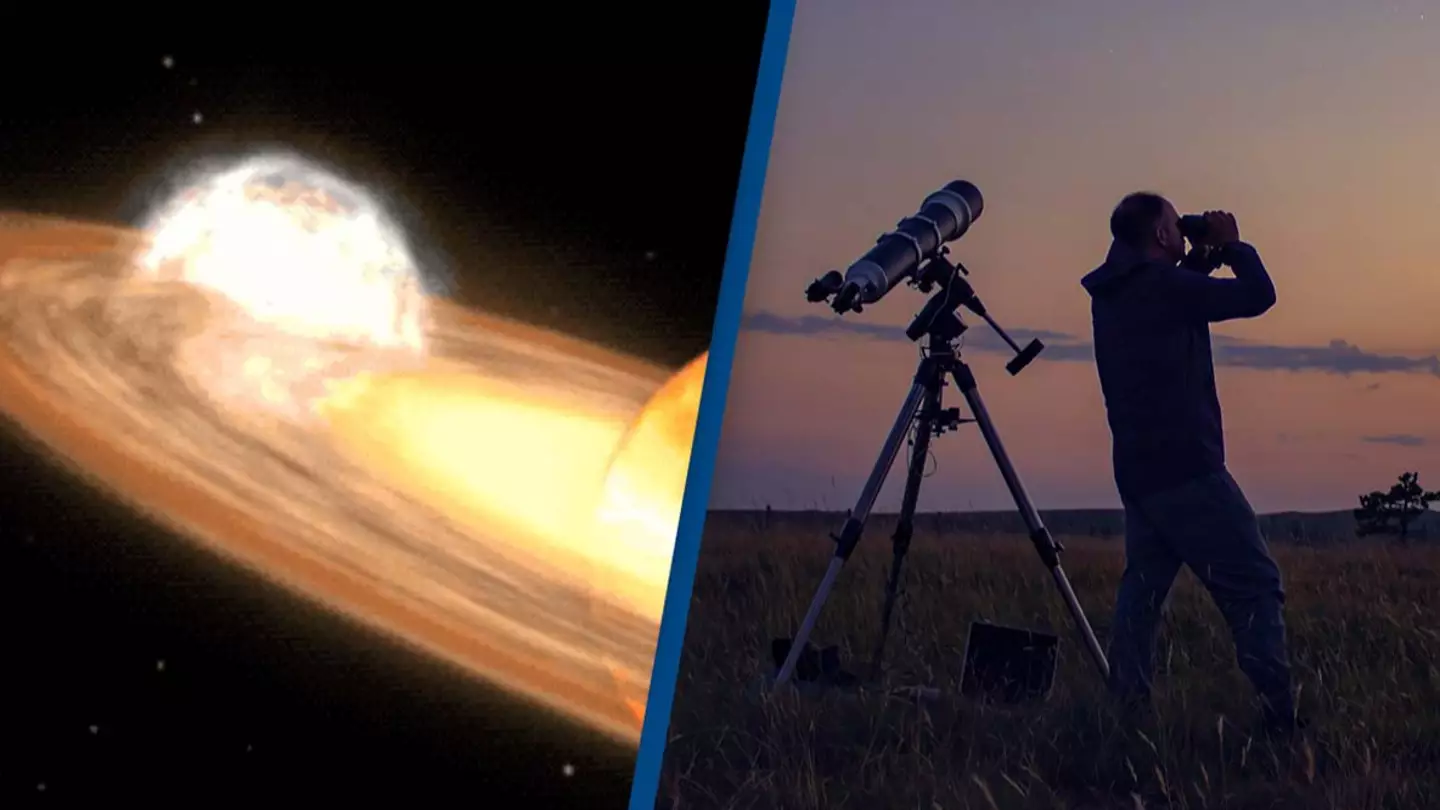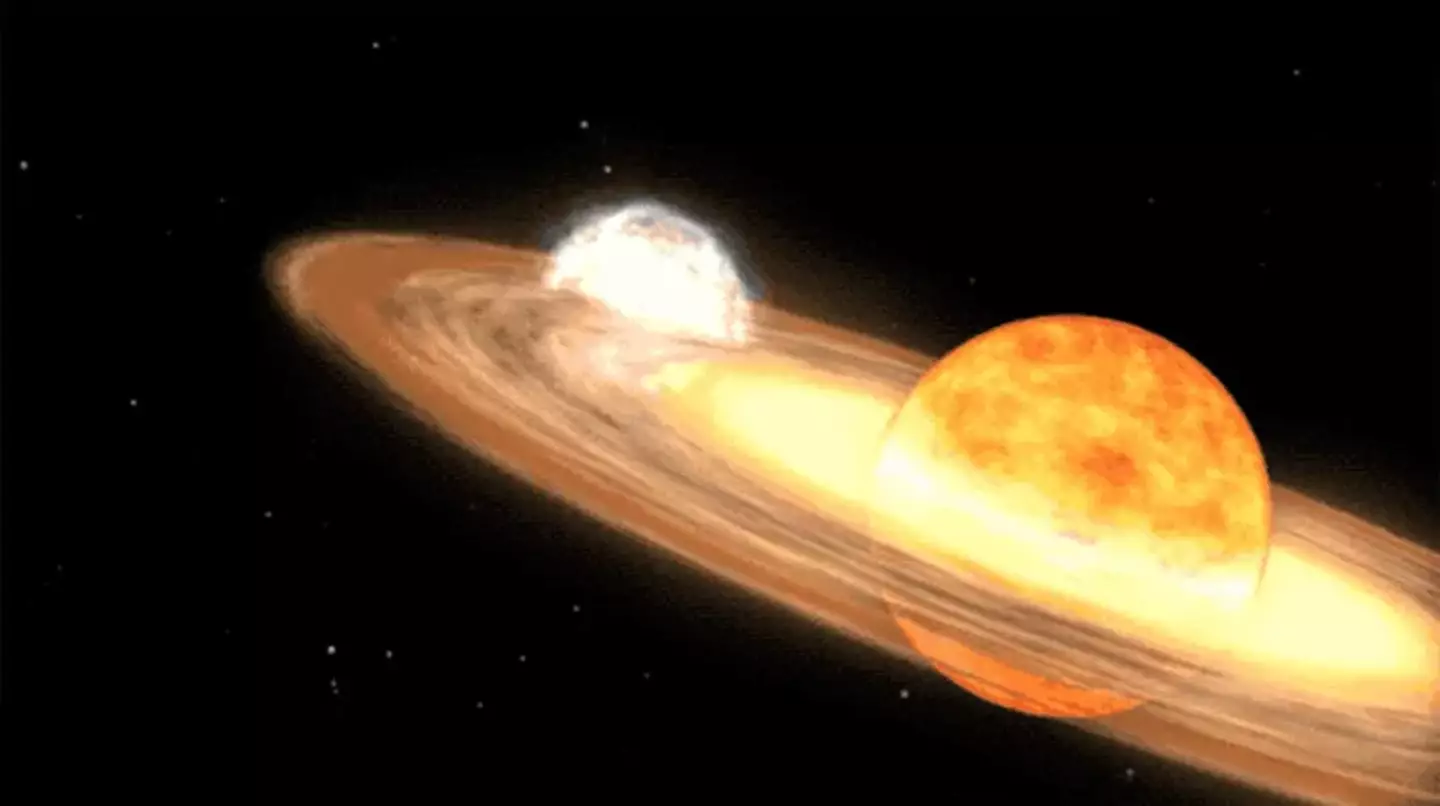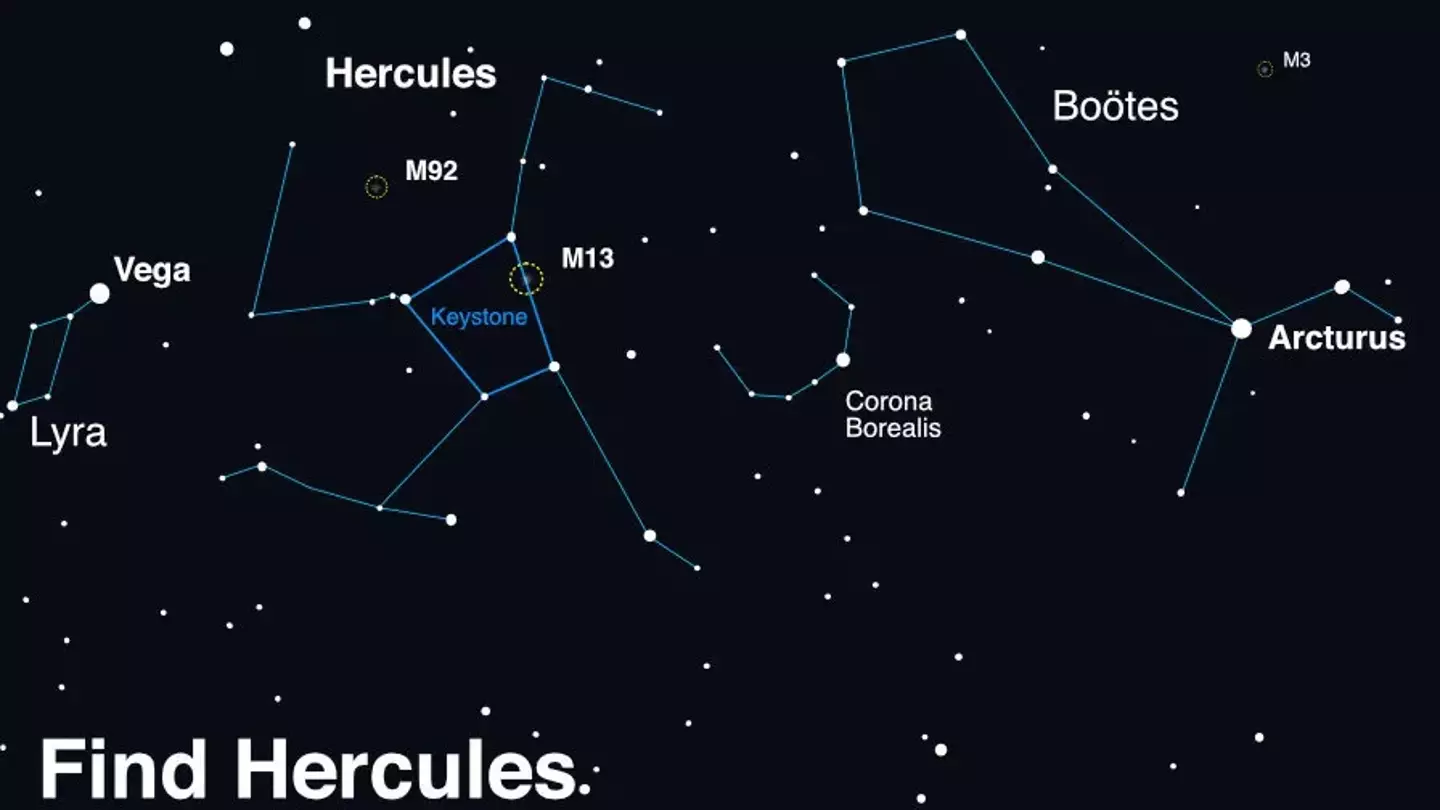
NASA has revealed a star system is set to become visible to the 'unaided eye' very soon.
A nova explosion which only happens around every 80 years is set to occur in 2024 and NASA has called it 'a once-in-a-lifetime viewing opportunity'.
 T Coronae Borealis last exploded in 1946. (NASA/ Conceptual Image Lab/ Goddard Space Flight Center)
T Coronae Borealis last exploded in 1946. (NASA/ Conceptual Image Lab/ Goddard Space Flight Center)

What is it?
Star system T Coronae Borealis - also known as T CrB or the Blaze star - is a recurrent nova in the constellation Corona Borealis.
Advert
For those of us who aren't astronomers or avid star gazers, a nova is 'a sudden, short-lived explosion from a compact star not much larger than Earth', NASA explains.
It continues: "The outburst comes from a collapsed star known as a white dwarf, which circles so close to a normal star that a stream of gas flows between them."
NASA explains the nova explosion occurs because the T Coronae Borealis is 'a binary system with a white dwarf and red giant'.
"The stars are close enough that as the red giant becomes unstable from its increasing temperature and pressure and begins ejecting its outer layers, the white dwarf collects that matter onto its surface," it adds. "The shallow dense atmosphere of the white dwarf eventually heats enough to cause a runaway thermonuclear reaction - which produces the nova we see from Earth."
Advert
The T Coronae Borealis last exploded in 1946 and the next event is expected to take place this year. And with the recurring nova only one of five in our galaxy, NASA say it could be 'a once-in-a-lifetime viewing opportunity'.

When and where will it occur?
Astronomers have predicted the T Coronae Borealis is set to explode between February and September 2024.
Advert
And if you're questioning where you'll be able to see it from, well, you just need to try and find as least light polluted an area as possible but you won't need to drag around any fancy equipment because it's set to be visible to the naked eye 'for several days' - and if you do miss that, then a pair of binoculars can help you catch it in 'just over a week'.
While you can't typically see the star system without help given it's normal magnitude of +10, when it explodes, this number goes to a magnitude of +2 which NASA says is of 'similar brightness to the North Star, Polaris'.
If you look up at the sky, the 'new' star will appear in the Corona Borealis constellation - also known as the Northern Crown - which is a 'small, semicircular arc near Bootes and Hercules'.
Topics: NASA, Space, Technology, World News, Science